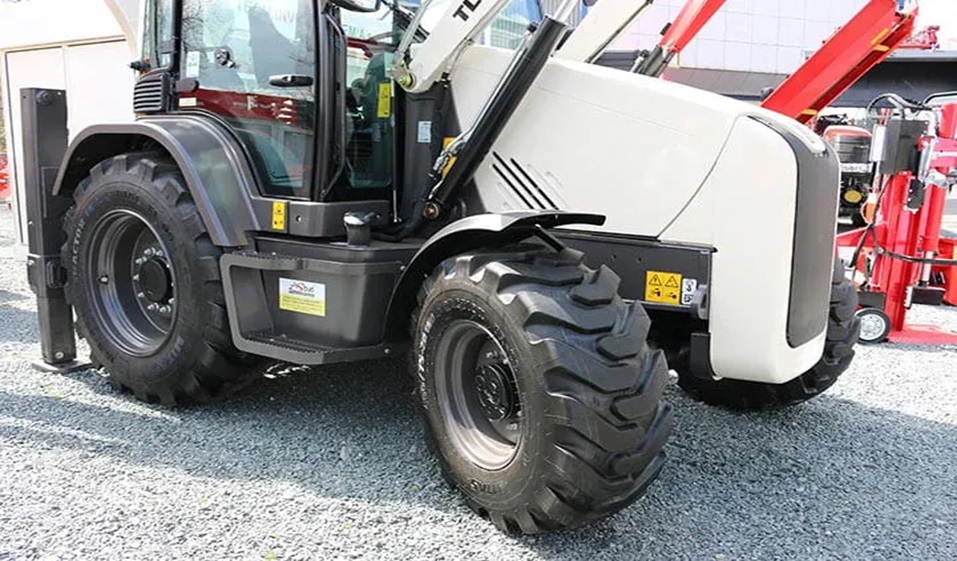In the competitive landscape of industrial operations, maximizing efficiency is pivotal for achieving optimal performance and maintaining a competitive edge. By employing effective strategies and focusing on key components of industrial systems, businesses can significantly enhance their operational capabilities. This article explores critical strategies for boosting industrial performance, with a particular focus on optimizing industrial machinery tyres and heat exchangers.
Optimizing Industrial Machinery Tyres
Industrial Machinery Tyres are fundamental to the performance and efficiency of heavy-duty equipment used in manufacturing and other industrial applications. The choice and maintenance of these tyres directly impact machinery uptime, fuel efficiency, and overall operational effectiveness.
Selection of High-Quality Tyres
The foundation of maximizing efficiency with industrial machinery tyres starts with selecting high-quality products designed for specific operational requirements. Tyres should be chosen based on factors such as load capacity, tread pattern, and material composition. For instance, tyres with a robust tread pattern can provide better traction and stability, reducing the risk of slippage and equipment downtime. Additionally, tyres made from high-grade materials can withstand harsh industrial environments, leading to longer service life and fewer replacements.
Regular Maintenance and Monitoring
Effective maintenance practices are essential for ensuring that industrial tyres perform at their best. Regular inspections should be conducted to check for signs of wear, damage, or misalignment. Proper tyre inflation is crucial, as under-inflated tyres can cause increased rolling resistance, reducing fuel efficiency and leading to higher operational costs. Implementing a tyre management system that includes monitoring tyre pressure, tread depth, and overall condition can help prevent issues before they escalate, ensuring consistent performance and extending tyre lifespan.
Optimal Usage Practices
To maximize tyre efficiency, operators should follow best practices for equipment usage. This includes avoiding overloading machinery, which can place excessive strain on tyres and lead to premature wear. Additionally, implementing proper driving techniques, such as smooth acceleration and braking, can minimize tyre stress and enhance overall performance. Training operators to adhere to these practices can contribute significantly to maintaining tyre efficiency and reducing operational disruptions.
Enhancing Heat Exchanger Efficiency
Heat exchangers play a critical role in industrial processes by transferring heat between fluids, enabling efficient temperature regulation and energy conservation. Enhancing the efficiency of heat exchangers is crucial for optimizing industrial performance and reducing energy consumption.
Regular Cleaning and Maintenance
Heat exchangers are susceptible to fouling and scaling, which can impede heat transfer efficiency and lead to increased energy consumption. Regular cleaning and maintenance are essential to prevent these issues. Depending on the type of heat exchanger and the nature of the process fluids, cleaning methods may include chemical treatments, mechanical cleaning, or a combination of both. Implementing a scheduled maintenance program can help ensure that heat exchangers remain in optimal condition, minimizing performance degradation and maximizing energy efficiency.
Upgrading Heat Exchanger Technology
Technological advancements have led to the development of more efficient heat exchanger designs and materials. Upgrading to modern heat exchanger technology can offer significant performance improvements. For example, heat exchangers with enhanced surface area or advanced heat transfer materials can achieve higher thermal efficiency and lower energy consumption. Conducting a thorough evaluation of existing heat exchanger systems and considering upgrades that align with process requirements can lead to substantial gains in efficiency.

Monitoring and Optimization
Continuous monitoring of heat exchanger performance is vital for identifying and addressing issues promptly. Utilizing advanced sensors and monitoring systems can provide real-time data on parameters such as temperature, pressure, and flow rates. Analyzing this data allows for the optimization of heat exchanger operations, ensuring that they operate within their designed parameters and achieve maximum efficiency. Regular performance reviews and adjustments based on monitoring data can help maintain optimal heat exchanger function and prevent inefficiencies.
Conclusion
Maximizing efficiency in industrial performance involves a comprehensive approach that includes optimizing key components such as industrial machinery tyres and heat exchangers. By selecting high-quality tyres, implementing regular maintenance practices, and adopting optimal usage techniques, businesses can enhance machinery performance and reduce operational costs. Similarly, ensuring effective cleaning, upgrading technology, and continuously monitoring heat exchangers can lead to significant improvements in energy efficiency and overall performance. Adopting these strategies will not only improve operational efficiency but also contribute to long-term success in the competitive industrial landscape.

